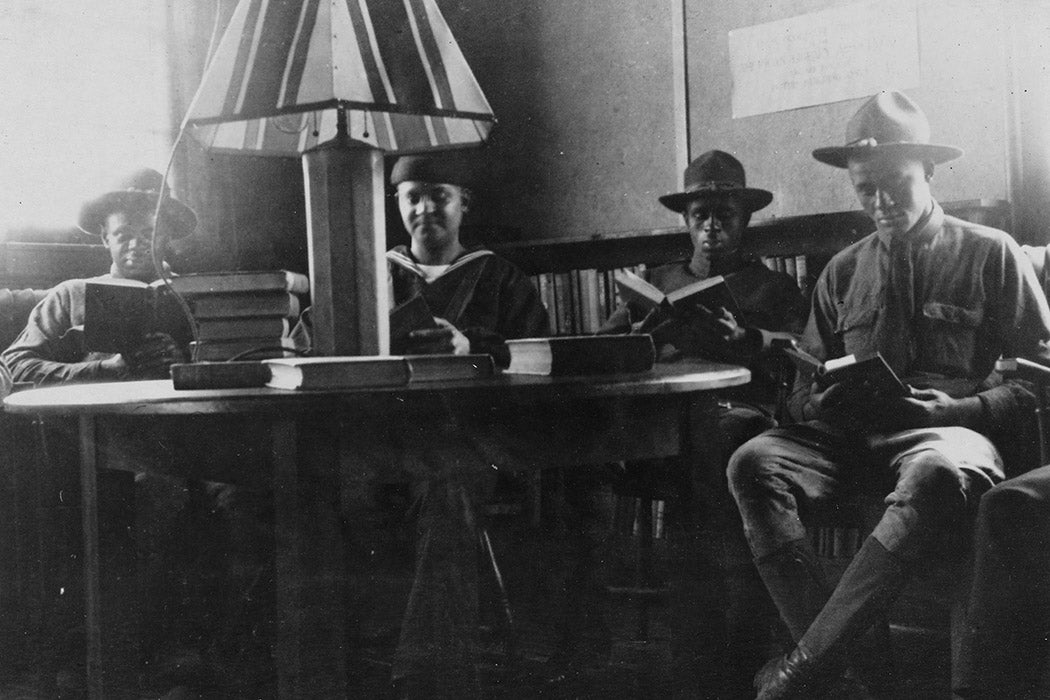On March 9, 1916, a raid led by Mexican revolutionary leader Francisco “Pancho” Villa attacked the small border town of Columbus, New Mexico. The raid was pushed back and forty-eight hundred troops were soon called to the border as part of a punitive expedition, eventually increasing to ten thousand men. Of these, half were stationed in the nearby camp, where life was tedious and there was no way to pass the time outside of training and patrol duties. In the evenings, soldiers ventured into town to escape their boredom and loneliness; there they found distraction in the disreputable saloons and brothels of the local red-light district.
By the next year, the US military shifted its focus to the Great War in Europe. In 1917, the US had a standing army of just over 127 thousand men, a quantity considered insufficient for a successful expeditionary force. Because of that, Congress passed the Selective Service Act in May; the law required men between the ages of twenty-one and thirty-one to register for the draft, with subsequent registrations for men between the ages of eighteen and forty-five. In total, more than twenty-four million men were registered and more than two million were inducted into the military. All told, more than four million men, both volunteers and conscripts, served during World War I.
Each person who joined the military was be stationed in one of the training camps throughout the United States to prepare him. Until then, training camps offered little in the way of educational resources or wholesome amusement. With the imminent deluge of new soldiers, Newton Baker, the secretary of the War Department, and President Woodrow Wilson assessed the offerings on their camps. They were determined to find ways to steer men away from vice, as well as from its likely fall-out, venereal disease. In particular, Newton and Wilson were concerned about the state of mind of the drafted—men who may not otherwise have joined up and who were, perhaps, ambivalent. They wanted to eliminate the reasons these men might become demoralized.
And thus was born the Commission on Training Camp Activities, tasked with making available morally-acceptable recreational activities. By coordinating in-camp entertainment, the War Department aimed to ensure a well-organized and healthy group of men they could shape into soldiers and sailors.

At the same time, the American Library Association (ALA), founded in 1876, began to consider how it might fulfill its patriotic duty. To make an informed assessment, the ALA created the Committee on Mobilization and War Service Plans, which determined in June 1917 that it could be of service by doing what librarians do best: provide reading materials on a variety of topics, free of charge, to those who wanted them.
Weekly Newsletter
The ALA drew inspiration from traveling libraries organized by Berlin’s Royal Library for German troops, and by four volunteer organizations, including the Red Cross and the YMCA, which made books available to British troops. It also looked to its own previous effort to circulate reading materials to troops stationed along the Mexican border in 1916; owing to a lack of support from military officials as well as poor organization, that attempt failed to take off.
On the face of it, books may not seem vital to the life of an enlisted man. Yet many soldiers were forgoing education and professional training to serve their country; books would allow them to continue their studies. They would help these men prepare themselves for promotions and explain the ideals that fueled the war. Moreover, they would help ward off the monotony and unfamiliarity of camp life.
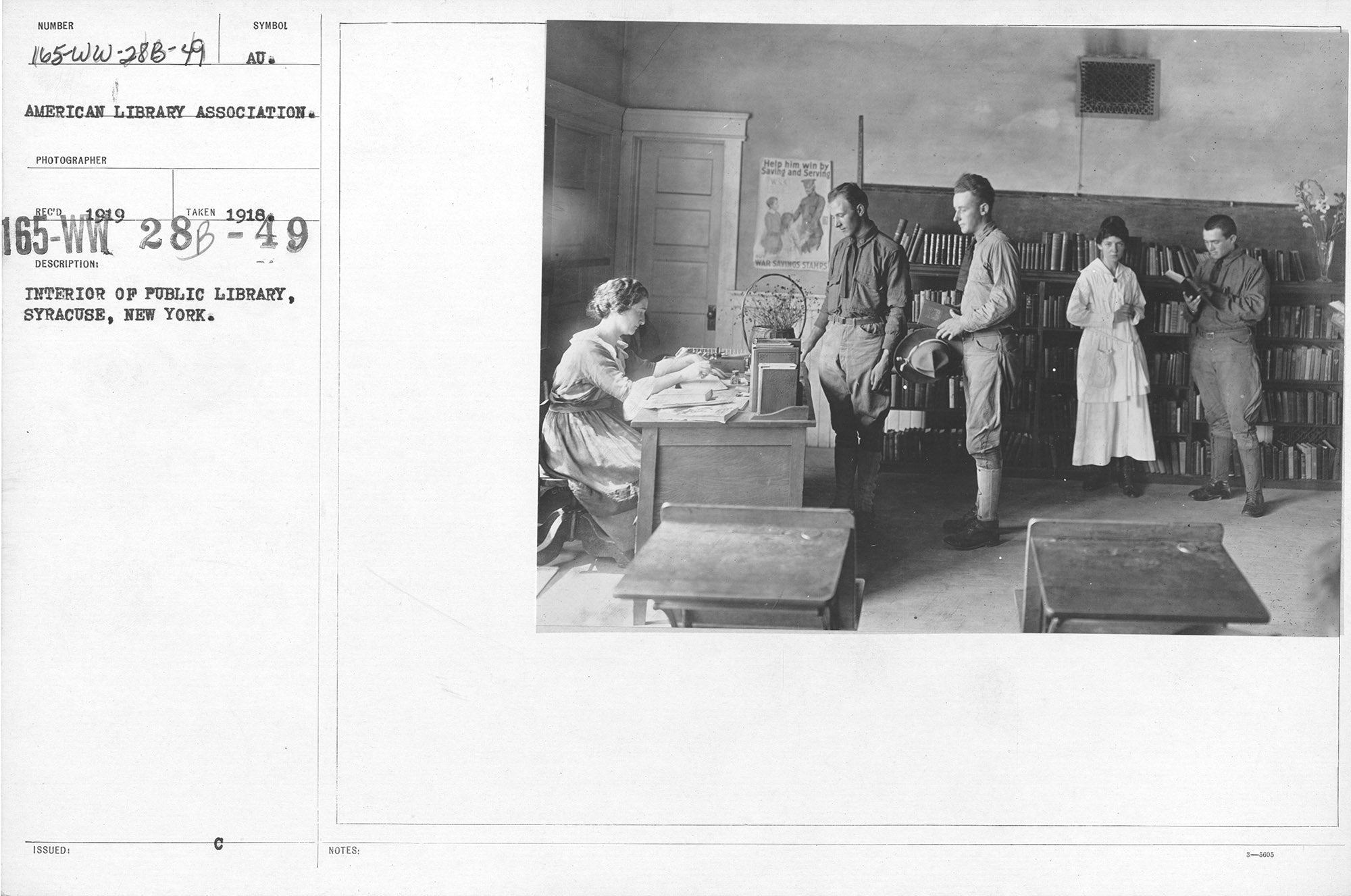
By June 28, the Commission on Training Camp Activities unanimously voted to ask the ALA to take on the responsibility of providing library facilities and professionally trained librarians to the thirty-two training camps throughout the United States. The ALA would be responsible for securing funds both to build the onsite facilities and to equip them with books, while the Commission would cover utilities.
The Library War Service, as it this collaborative entity was soon named, solicited donations from librarians, corporations, and the public. It aimed to raise $1 million by September 24. ALA members secured a $320 thousand donation from the Carnegie Corporation, contingent upon the ALA raising a matching sum. Soon $10,000 in pledges were arriving. In one two-week stretch, some fifty-three libraries around country pledged $50 thousand, equivalent to more than $1.13 million in 2023.
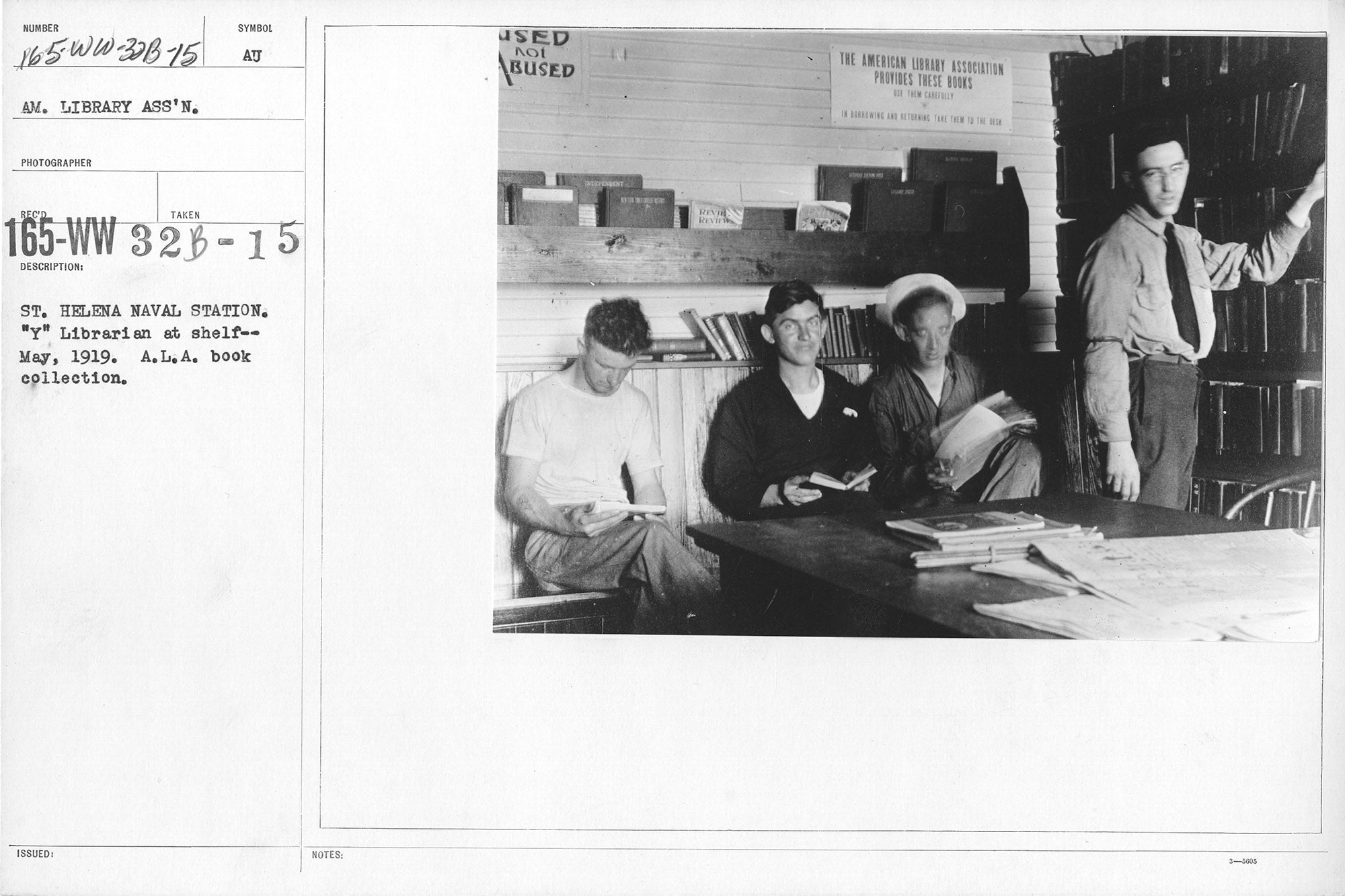
Throughout the fall of 1917, individual donations poured in—from as little as three cents up to a thousand dollars a piece. By January 19, 1918, the ALA had raised more than $1.5 million. Librarians made sure donors knew where their contributions went; they donors to have a sense of ownership in helping boost troop morale and, in turn, aiding the war effort.
In March, the ALA began a book drive, asking the public to pass along titles they’d read. In particular, the ALA wanted novels and adventure stories, volumes on aviation and engineering, travel and foreign language titles (especially those about France and written in French), and books on trades, professions, and agriculture. To fortify bonds between the public and camp libraries, the ALA printed informational bookmarks with detachable bookplates to be pasted inside of the book. On the bottom of the bookplate, donors wrote their names and addresses, fashioning their donations into something of a gift, and furthering their emotional investment in the cause. The ALA had wanted two million donated books; within six months, they had more than three million to distribute.
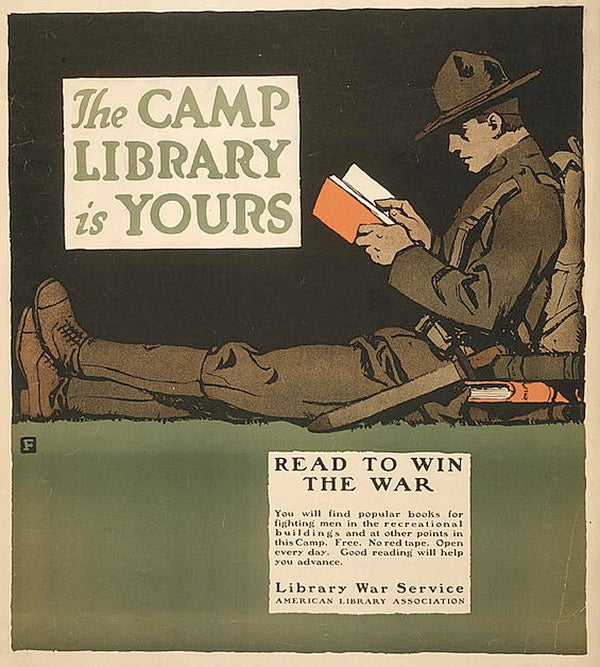
Once the libraries were up and running, librarians got to work finding ways to entice soldiers to central libraries at the training camps and to creating smaller company libraries in corners of barracks, mess shacks, officers’ tents, and hospitals. The ALA worked with other organizations in the camps, like the Knights of Columbus and the Jewish Welfare Board, to ensure wholesome recreation was offered to the enlisted men.
For many soldiers, training camp was their first time away from home and their first exposure to new ideas and institutions. A librarian at Camp Wheeler in Georgia noted many of the men stationed there had never heard of a public library, and three thousand of them were illiterate. This was perhaps to be expected, as public libraries only started to gain popularity in the previous century and were located mostly in cities. As for rates of illiteracy, compulsory primary education was not legally required in all states until 1918. Furthermore, the draft was all inclusive, and some conscripts could not speak or understand English. Time at training camps might offer those in the service their first experience of formal education; camp administrators offered classes in English, French, spelling, and reading, in addition to vocational training. The library’s holdings included textbooks that supplemented these courses. In South Carolina’s Camp Wadsworth, the hospital librarian noted there were 57 easy reader books for novices. The same librarian made note of a colleague’s encounter with a man in camp asking him why he stopped borrowing Italian books from the library. ”I like very much to read Italian books,” the soldier responded proudly, “but I am learning to read English.” Knowing English would help soldiers succeed; they needed to read and understand information on camp bulletin boards and commands, skills that they would surely apply in civilian life.

These libraries also became popular destinations for servicemen who wanted to take part in various entertainments at the training camps, such as amateur talent shows and sing-alongs. A librarian working in Pelham Bay Naval Station, New York noted that a young sailor who wanted to be more involved in camp life generally asked, “Could you give me a funny poem which I could learn before night? There is going to be a show over here and if I can learn the poem I can be in it.”
Hospitalized soldiers could also use libraries to quell boredom. In Camp Wadsworth, the hospital librarian recorded 1,347 books in circulation in a single month. Confinement was no impediment to library access. Carts of books were wheeled and distributed throughout wards, allowing soldiers to choose amongst titles from bed. If a particular book was not available, libraries would take care so that a special delivery would be made later.
Training camp libraries also made it easier for the enlisted men to connect with their families and lives back home. Mothers of new servicemen sometimes knew only of the existence of a camp library and would address letters there to be forwarded to their sons. There were materials in a variety of languages to help the transition between civilian and military life. The Jewish Welfare Board supplied Yiddish books for Yiddish-speaking recruits. Offering books in the language soldiers used at home fomented a sense of familiarity in the camps and eased the transition away from home. The librarian at the Pelham Bay Naval Station described a young sailor who asked her to read aloud a letter sent from his mother. It was the librarian’s understanding that she would serve, in this instance, as a mother figure. Another soldier asked her to help him write a letter of condolence to his best friend’s parents after reading his friend had gone “over the top” for the last time in the morning paper. While another librarian remarked how she her colleagues in the camps’ hospital libraries were perceived by the sick; “You are mother and grandmother and aunt and sister and sweetheart all in one,” a sailor affectionately told her.
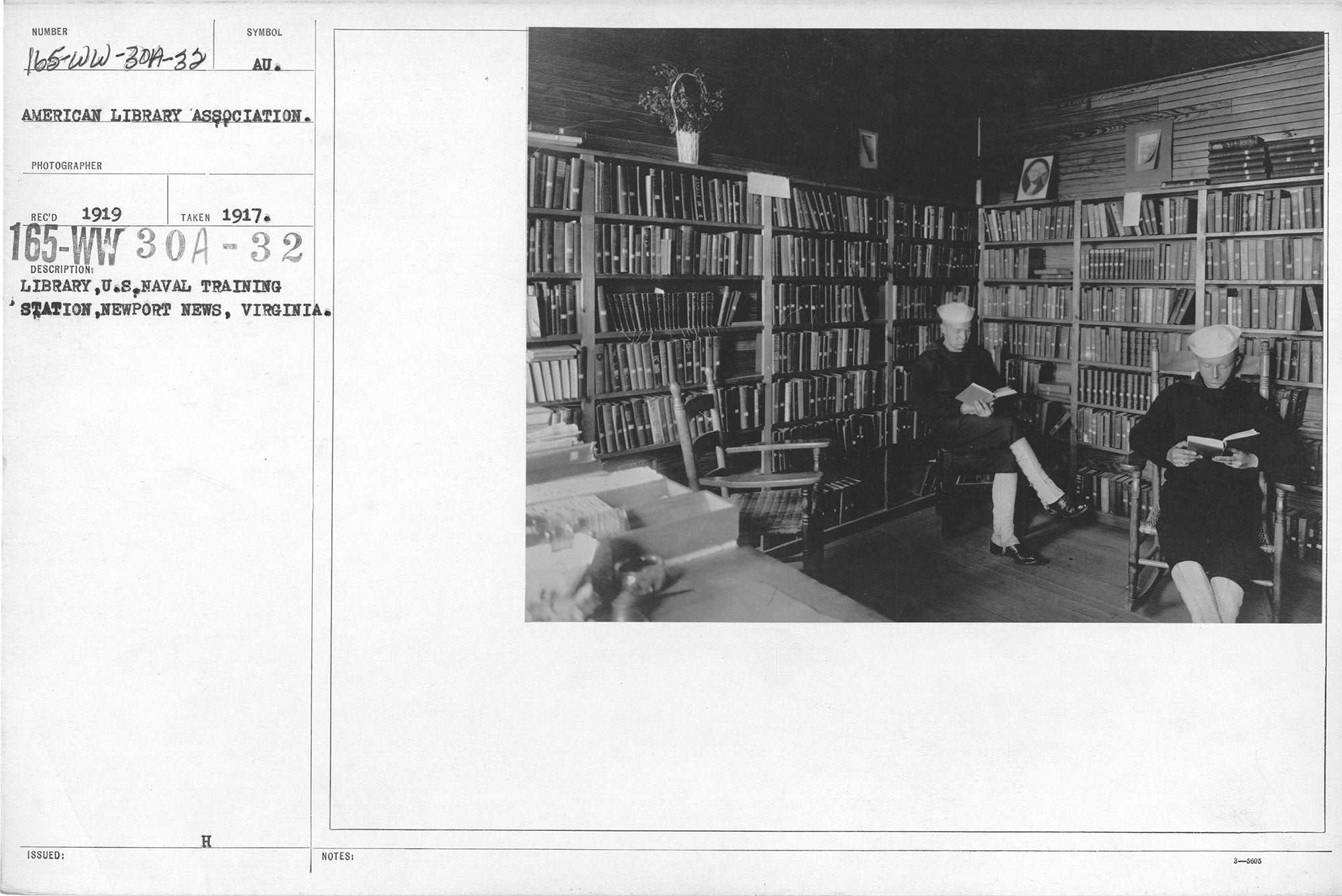
Libraries and librarians at military training camps helped servicemen stay connected to the parts of themselves that made them who they were before the onset of war.
Along with these libraries, dispatch stations were also opened in embarkation ports to allow books to be sent to France and supplied to men during their transports. By the time the Great War ended in November 1918, the number of libraries and book distribution points stood at 2,804, including large camp, hospitals, recreation huts, naval ships, transport vessels, and posts overseas. Collectively the ALA bought, donated, and distributed more than eight million publications during that period, and in so doing helped birth the concept of free education. Working with the public to secure both money and books fostered a connection between civilians and enlisted men; the former became emotionally invested in the war effort while the latter came to understand that they were cared for—and not forgotten—by those who remained at home.
